The Laguiole knife, an object-tool whose reputation is second to none
Laguiole is the capital of cutlery in Aubrac, a region of central France. Most people think that knife manufacturing in Laguiole is an ancient tradition that has adapted and been mastered over the centuries! Surprisingly, it is not!
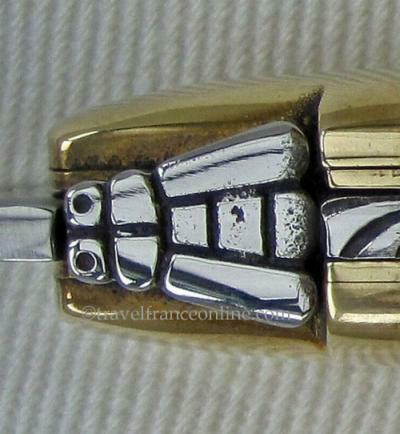
The Laguiole knife was born from the famous navaja, a knife brought back from Catalonia (Spain) in the early 19th century by local shepherds who worked there as lumberjacks during the harsh winter months. The true paternity of the Laguiole knife falls to Pierre-Jean Calmels, a local shepherd who in 1829 turned the navaja into a folding knife with forced notch.
The Laguiole knife has a slip joint but no ring to keep the blade open. The spring lies constantly on the spine of the blade, and therefore stops in the notch of the spine when the knife is open. The slip joint has no lock and simply closes by putting pressure on the spine of the blade. The folding Laguiole was so much easier to use and carry than traditional knives that it became an indispensable tool for the shepherds.
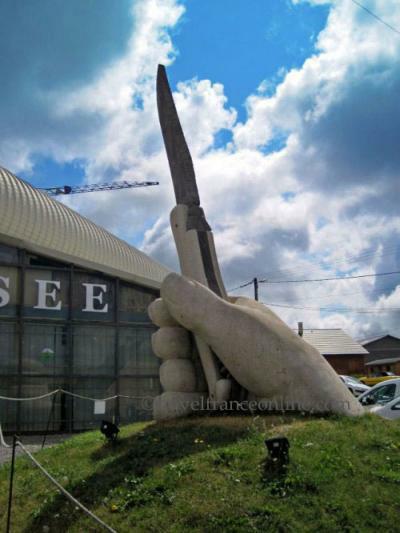
In 1840, the punch or trocart used by breeders was added to the knife. This allowed them to pierce the rumen of cattle to allow fermentation gases to escape. This bloating occurs at the beginning of transhumance when the animals changed their diet, namely the passing from hay to fresh grass which they had lost the habit of digesting. A corkscrew was added in 1880 to meet the requests from café owners from the Aveyron region who had gone to Paris to open bars.
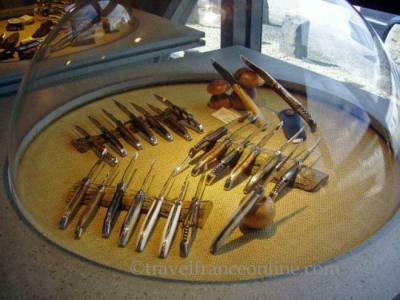
Thus was born the famous three-piece knife with a blade, a corkscrew and a punch, the ancestor of all the Laguiole knives that we see today. The production of knives suffered a decline during the 20th since the two wars seriously depopulated the country. The business was revived with great success in the 1980’s and approximately 400,000 knives are now produced annually in the Laguiole approved area.
The Laguiole knife’s distinguishing marks
The Laguiole knife is recognizable by the Bee that decorates the junction of the handle and blade. History has it that Napoleon I gave the bee, the emblem of his seal, to the town in recognition of the exceptional bravery of the soldiers from Laguiole during the Napoleonic campaigns.
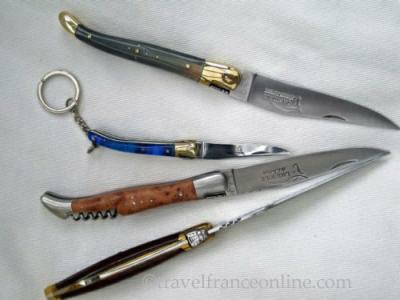
The bee is not an absolute guarantee of authenticity, though, as the brand name Laguiole was not filed so it is now difficult to control its use, and unfortunately it is part of a long list of items that are subject to imitation, a fact that harms its reputation. The true Laguiole knife must imperatively be accompanied by a certificate of origin and guarantee that displays the name, address and phone of the manufacturer to ensure authenticity.

The bee, however, may also be replaced with custom designs. One can find beautiful unique pieces decorated with a scallop (the symbol of pilgrimage to Santiago de Compostela) or a four- leaf clover (a traditional good-luck charm). The knives are also engraved with the cutlery’s logo. The complexity and number of patterns engraved on the top and the back of the blade, the spring, or the bolster depend on the model. The more one moves toward high-end knives, the more prints there will be.

The Shepherd’s Cross, a pattern formed by small rivets, appeared on the handle of some knives at the beginning of the 20th century at the request of transhumant shepherds who could not attend Mass when they were in altitude pastures during summer. They planted their knives in their bread and the cross served as a portable oratory.
The Laguiole knife comes with different qualities of blades and handles
The old traditional knives have carbon steel blades that are prone to oxidation and therefore rust on contact with water.
The stainless steel blades do not rust of course but they must nevertheless always be dried after use. Finally there are the prestigious Damascus steel blades!

The handles are traditionally made from horn and horn tip from the local breed of Aubrac cow, but antler and ivory are also used for premium and collectable knives. Stainless steel, aluminium or acrylic handles, resistant to water and therefore washable, have made their entry into the market to offer a wider range of prices and a touch of modernity in response to requests of a diverse clientele but all knives benefit from the unique treatment that made the reputation of Laguiole.
Read more
The bouquinistes along the Seine
Mardi Gras – carnival season
The French and their bread



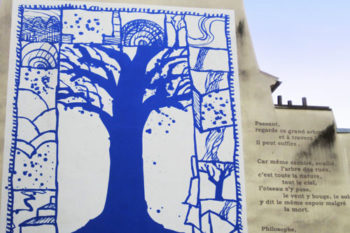

How beautiful they are! Such an interesting story. Knives fascinate me, from the “facones” that gauchos use and wear as part of their attire to just beautiful expensive German cooking knives. These are really wonderful.
I am pleased that you find them attractive Aledys, as normally knives are more popular with men! I entirely agree with you, they are very elegant and I have a set of 12 which I always use on the table when serving meat at diner parties. In fact it is almost a sort of ” trendy thing” to do…I do it because they cut very well and I like them!
I agree with Aledys that they are beautiful knives! They blow my little red plastic covered Swiss Army Knife right out of the water.
Are there ever additional functions/mini tools added to these? Above and beyond the three they already have, that is.
Basically yes Kelly, the difference is in the ‘design” as they used to be for shepherds and now for everyone who fancies knives. Some of them as gorgeous “piece unique” and won awards! Never take your husband in the shop…he will camp in the premises! 🙂
Swiss army knives are brilliant as well, just more like a proper “tool” (i have one too, so useful!)